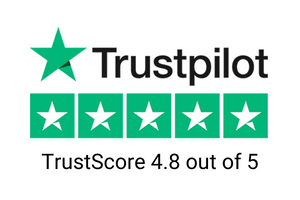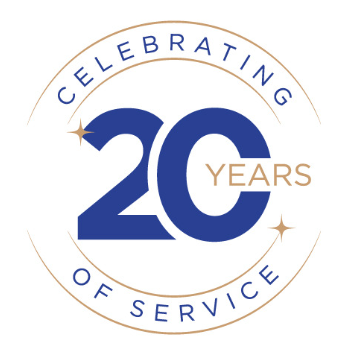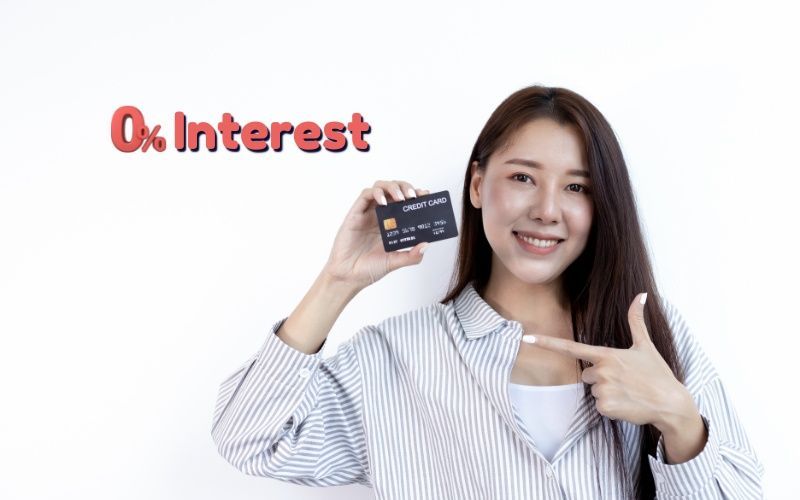Why Understanding Credit Card Interest Is Essential for Financial Success

Disclaimer: We are not qualified legal or tax professionals and are not giving advice. Always speak with a qualified professional before making any legal or financial decisions.
Credit card interest can be a silent killer when it comes to your financial well-being. Many people find themselves trapped in a cycle of debt due to high interest rates and the compounding effect of carrying a balance from month to month. This means that if you're not careful, you could end up paying hundreds or even thousands of dollars in interest charges over time.
The good news is that there are several strategies you can employ to avoid paying credit card interest altogether. By understanding how credit card interest works and implementing smart financial habits, you can break free from the burden of debt and take control of your financial future.
Eager to talk now? Skip the article and secure a free consultation with a debt specialist.
Understanding Credit Card Interest
Before we can effectively avoid credit card interest, it's essential to understand how it works. Credit card interest is the price you pay for borrowing money from your credit card issuer. It's expressed as an annual percentage rate (APR), which represents the yearly cost of borrowing money, including interest and other fees.
What is credit card interest?
Credit card interest is the amount of money you pay on top of your principal balance (the amount you borrowed) for the privilege of borrowing money from your credit card issuer. Interest is charged when you carry a balance from one billing cycle to the next or when you make a cash advance or balance transfer.
How credit card interest is calculated
Credit card interest is calculated based on your APR and your average daily balance. Here's a breakdown of the key terms you need to know:
- Annual Percentage Rate (APR): This is the yearly cost of borrowing money, expressed as a percentage. It includes interest and other fees, such as annual fees or balance transfer fees.
- Daily periodic rate: This is your APR divided by 365 (or 360, depending on your credit card issuer's method). It represents the daily interest rate applied to your balance.
- Average daily balance: This is the sum of your daily balances divided by the number of days in your billing cycle. It's used to calculate the amount of interest you owe.
To calculate your interest charges for a billing cycle, your credit card issuer multiplies your average daily balance by your daily periodic rate and then multiplies that result by the number of days in your billing cycle. Here’s how credit card interest is calculated for a more detailed breakdown.
The difference between credit card interest and APR
While credit card interest and APR are closely related, they're not exactly the same thing. APR is the annual cost of borrowing money, including interest and other fees, while interest is the specific amount you pay on top of your principal balance. In other words, APR is a broader term that encompasses interest and other costs associated with borrowing money.
Types of credit card interest rates
There are several types of credit card interest rates you should be aware of:
- Purchase APR: This is the interest rate applied to purchases made with your credit card.
- Balance transfer APR: This is the interest rate applied to balances transferred from another credit card.
- Cash advance APR: This is the interest rate applied to cash advances (withdrawing cash using your credit card).
- Penalty APR: This is a higher interest rate that may be applied to your account if you make a late payment or violate other terms of your credit card agreement. If you've experienced or are curious about the reason for the unexpected increases in your credit card interest rate, It’s important to know why your credit card interest keep going up.
The impact of high credit card interest on debt accumulation
High credit card interest rates can have a significant impact on your ability to pay off debt. When you carry a balance from month to month, interest charges are added to your principal balance, making it harder to pay off your debt over time. This is known as compounding interest, and it can cause your debt to snowball quickly if you're not careful.
For example, let's say you have a credit card with a $5,000 balance and an APR of 18%. If you only make the minimum payment each month (typically 2-4% of your balance), it would take you over 20 years to pay off your debt, and you would end up paying more than $7,000 in interest charges alone.
By understanding how credit card interest works and the impact it can have on your debt, you'll be better equipped to make informed decisions about your credit card use and avoid falling into the trap of high-interest debt.
Leveraging Credit Card Grace Periods
One of the most effective ways to avoid paying credit card interest is to take advantage of your credit card's grace period. A grace period is a window of time between the end of your billing cycle and your payment due date, during which you can pay off your balance without incurring interest charges.
What is a credit card grace period?
A credit card grace period is the time between the end of your billing cycle and your payment due date. During this period, if you pay off your entire balance, you won't be charged interest on your purchases. Grace periods typically last 21-25 days, but they can vary depending on your credit card issuer and the type of card you have.
How grace periods can help you avoid interest charges
By taking advantage of your credit card's grace period, you can avoid paying interest on your purchases altogether. As long as you pay off your entire balance by the due date each month, you'll never be charged interest on your purchases.
Here's an example of how this works:
Let's say your billing cycle ends on the 15th of every month, and your payment due date is on the 10th of the following month. If you make a purchase on the 16th and pay off your entire balance by the 10th of the next month, you won't be charged any interest on that purchase.
The importance of paying your full statement balance within the grace period
To fully leverage your credit card's grace period and avoid interest charges, it's crucial to pay off your entire statement balance by the due date each month. If you only pay a portion of your balance, you'll lose your grace period and start accruing interest on the remaining balance and any new purchases you make.
How to make the most of your credit card grace period
Here are some tips to help you maximize your credit card's grace period and avoid interest charges:
- Pay your balance in full each month: Make it a habit to pay off your entire credit card balance by the due date each month.
- Set up automatic payments: Consider setting up automatic payments from your bank account to ensure you never miss a due date.
- Make purchases early in your billing cycle: By making purchases early in your billing cycle, you'll have more time to pay off your balance before the due date.
- Track your spending: Keep track of your credit card spending throughout the month to ensure you're not overspending and can pay off your balance in full.
- The Consumer Financial Protection Bureau provides further insights on how grace periods can benefit you.
What happens when the grace period ends?
If you don't pay off your entire balance by the due date, you'll lose your grace period and start accruing interest on your remaining balance and any new purchases you make. Interest charges will be applied to your account daily, based on your APR and average daily balance.
To regain your grace period, you'll need to pay off your entire balance and then continue paying your balance in full each month. Once you've done this for a few billing cycles, your credit card issuer will typically reinstate your grace period.
Paying Your Credit Card Balance in Full Each Month
One of the most effective ways to avoid paying credit card interest is to pay your balance in full each month. By doing so, you'll not only save money on interest charges, but you'll also improve your credit score and establish good financial habits.
The benefits of paying your credit card balance in full
Paying your credit card balance in full each month offers several key benefits:
- No interest charges: When you pay off your entire balance by the due date, you won't be charged any interest on your purchases.
- Improved credit score: Consistently paying your balance in full demonstrates financial responsibility and can help improve your credit score over time.
- Greater financial control: By paying off your balance each month, you'll avoid accumulating debt and maintain better control over your finances.
- Increased rewards potential: If you have a rewards credit card, paying off your balance in full allows you to earn rewards without the cost of interest charges offsetting your earnings.
How to create a budget to ensure you can pay off your balance
To consistently pay off your credit card balance each month, it's essential to create a budget and stick to it. Here are some steps to help you create a budget that works for you:
- Track your income and expenses: Start by tracking your monthly income and all of your expenses, including rent/mortgage, utilities, groceries, transportation, and discretionary spending.
- Categorize your expenses: Divide your expenses into categories, such as essential living expenses, discretionary spending, and savings/debt repayment.
- Set spending limits: Based on your income and expenses, set realistic spending limits for each category.
- Allocate funds for credit card payments: Make sure to allocate enough money each month to pay off your entire credit card balance.
- Adjust as needed: Review your budget regularly and make adjustments as necessary to ensure you're staying on track.
Setting up automatic payments to avoid missed due dates
One of the easiest ways to ensure you never miss a credit card payment is to set up automatic payments. Most credit card issuers allow you to set up automatic payments from your bank account, either for the minimum payment, a fixed amount, or your full balance.
By setting up automatic payments for your full balance, you can avoid missed due dates, the associated late fees, and potential damage to your credit score.
The relationship between paying in full and maintaining a good credit score
Paying your credit card balance in full each month is one of the best things you can do for your credit score. Your payment history is the most significant factor in determining your credit score, accounting for 35% of your FICO score.
By consistently paying your balance in full and on time, you'll demonstrate financial responsibility and establish a positive payment history, which can help improve your credit score over time.
Utilizing Balance Transfer Credit Cards
If you're already carrying a balance on a high-interest credit card, a balance transfer credit card can be a valuable tool for saving money on interest and paying off your debt more quickly.
What is a balance transfer credit card?
A balance transfer credit card is a type of credit card that allows you to transfer balances from other credit cards to a new card, often with a promotional 0% APR for a set period (usually 12-21 months). This means you can pay off your debt without accruing additional interest charges during the promotional period.
How balance transfer cards can help you save on interest
By transferring your high-interest credit card balances to a balance transfer card with a 0% APR promotion, you can save a significant amount of money on interest charges. Instead of paying interest on your balance each month, all of your payments will go towards paying down your principal balance.
Factors to consider when choosing a balance transfer card
When selecting a balance transfer credit card, there are several key factors to consider:
- Length of the introductory 0% APR period: Look for a card with a long promotional period (ideally 15-21 months) to give you ample time to pay off your balance without accruing interest.
- Balance transfer fees: Most balance transfer cards charge a fee (typically 3-5% of the transferred balance) for moving your balance to the new card. Factor this fee into your calculations when deciding if a balance transfer makes financial sense.
- Regular APR after the promotional period ends: Be aware of the card's regular APR, which will apply to any remaining balance after the promotional period ends. Aim to pay off your balance in full before the promotional period expires.
- You can visit this in-dept guide for choosing a balance transfer credit card.
Strategies for effectively using balance transfer cards to pay off debt
To make the most of a balance transfer card and pay off your debt effectively, consider the following strategies:
- Create a debt repayment plan: Divide your balance by the number of months in the promotional period to determine how much you need to pay each month to pay off your balance before the 0% APR expires.
- Make payments on time: Always make your payments on time to avoid late fees and potential damage to your credit score.
- Avoid new purchases: Resist the temptation to make new purchases on your balance transfer card, as these purchases will typically accrue interest at the regular APR and can make it harder to pay off your balance.
- Consider multiple balance transfers: If you have a large balance that you can't pay off within one promotional period, consider transferring the remaining balance to another balance transfer card with a 0% APR offer.
By using balance transfer credit cards strategically, you can save money on interest and accelerate your debt repayment. Just be sure to read the fine print, create a solid repayment plan, and stay disciplined with your spending to make the most of this valuable financial tool.
Managing Credit Card Payments and Balances
Effective credit card management is essential for avoiding interest charges and maintaining a healthy credit score. By staying on top of your payments and balances, you can take control of your financial future and avoid the pitfalls of high-interest debt.
The dangers of making only minimum payments
While making the minimum payment on your credit card each month can help you avoid late fees and damage to your credit score, it's not an effective strategy for paying off your debt. When you only make the minimum payment, a significant portion of your payment goes towards interest charges, and it can take years (or even decades) to pay off your balance.
For example, let's say you have a $5,000 balance on a credit card with an 18% APR and a minimum payment of 2% of the balance ($100). If you only make the minimum payment each month, it would take you 94 months (nearly 8 years) to pay off the balance, and you would pay $4,311 in interest charges.
How making multiple payments per month can reduce interest charges
One strategy for reducing interest charges is to make multiple payments on your credit card each month. By making payments more frequently, you can lower your average daily balance, which is used to calculate your interest charges.
Here's how it works:
Let's say you have a $1,000 balance on your credit card and your billing cycle ends on the 15th of each month. If you wait until the due date to make a $500 payment, your average daily balance for the month will be $750 (($1,000 x 15 days + $500 x 15 days) / 30 days).
However, if you make a $250 payment on the 1st of the month and another $250 payment on the 15th, your average daily balance will be $625 (($1,000 x 15 days + $750 x 15 days + $500 x 15 days) / 45 days), resulting in lower interest charges.
Using budgeting apps and tools to track your credit card spending and balances
To effectively manage your credit card payments and balances, it's important to stay on top of your spending and track your progress toward your financial goals. Budgeting apps and tools can be a valuable resource for doing just that.
Some popular budgeting apps and tools include:
- Mint: A free app that allows you to connect all of your financial accounts, track your spending, and create budgets.
- YNAB (You Need a Budget): A paid app that helps you create a budget based on your income and expenses and track your progress toward your financial goals.
- Personal Capital: A free app that provides a comprehensive view of your financial accounts, including your investments, and offers personalized advice for improving your financial health.
- Spreadsheets: If you prefer a more hands-on approach, you can use a spreadsheet (such as Microsoft Excel or Google Sheets) to track your credit card spending and balances manually.
By using these tools to stay on top of your credit card spending and balances, you can avoid overspending, stay on track with your payments, and work towards your financial goals more effectively.
Exploring 0% APR Credit Cards for New Purchases
If you're planning a large purchase or have an unexpected expense, a credit card with a 0% APR introductory offer on new purchases can be a valuable tool for saving money on interest charges.
How 0% APR credit cards work
A 0% APR credit card offers a promotional period (typically 12-21 months) during which no interest is charged on new purchases. This means you can make a large purchase or several purchases and pay them off over time without accruing interest charges, as long as you make your minimum payments on time and pay off the balance before the promotional period ends.
Benefits of using a 0% APR card for large purchases
Using a 0% APR credit card for large purchases offers several key benefits:
- Interest savings: By avoiding interest charges during the promotional period, you can save a significant amount of money on your purchases.
- Flexibility: A 0% APR credit card allows you to spread out the cost of a large purchase over several months, making it more manageable for your budget.
- Rewards potential: If you choose a 0% APR credit card that also offers rewards (such as cashback or points), you can earn rewards on your purchases while also saving on interest.
Things to watch out for when using 0% APR cards
While 0% APR credit cards can be a valuable financial tool, there are some things to watch out for when using them:
- Introductory period length: Be sure to note the length of the promotional period and aim to pay off your balance before it expires.
- Regular APR after the promotional period: Know what the card's regular APR will be after the promotional period ends, as any remaining balance will start accruing interest at this rate.
- Deferred interest vs. waived interest: Some cards offer deferred interest, which means if you don't pay off the balance in full by the end of the promotional period, you'll be charged interest on the entire original balance. Waived interest offers, on the other hand, only charge interest on the remaining balance after the promotional period ends.
Strategies for maximizing the benefits of 0% APR cards
To make the most of a 0% APR credit card and avoid potential pitfalls, consider the following strategies:
- Create a repayment plan: Divide your balance by the number of months in the promotional period to determine how much you need to pay each month to pay off the balance before the 0% APR expires.
- Make payments on time: Always make your payments on time to avoid late fees and potential damage to your credit score.
- Avoid new purchases: Resist the temptation to make additional purchases on the card, as these purchases may accrue interest at the regular APR and make it harder to pay off your balance.
- Consider the card's long-term value: If you plan to keep the card after the promotional period ends, evaluate its rewards, benefits, and regular APR to ensure it aligns with your financial goals.
By carefully selecting and using a 0% APR credit card for new purchases, you can save money on interest charges and make large purchases more manageable for your budget. Just be sure to have a solid repayment plan in place and avoid the temptation to overspend.
Alternatives to Using Credit Cards
While credit cards can be a convenient and rewarding way to make purchases, they're not always the best choice for everyone. If you're struggling with credit card debt or want to avoid the temptation of overspending, there are several alternatives to consider.
Exploring personal loans for debt consolidation
If you're already carrying high-interest credit card debt, a personal loan can be a valuable tool for debt consolidation. Personal loans often offer lower interest rates than credit cards, and they allow you to pay off your debt with a fixed monthly payment over a set term (typically 2-7 years).
By consolidating your credit card debt with a personal loan, you can save money on interest charges and simplify your debt repayment process. Just be sure to shop around for the best rates and terms, and avoid taking on new credit card debt after consolidating your balances.
The importance of building an emergency fund
One of the main reasons people rely on credit cards is to cover unexpected expenses, such as car repairs or medical bills. By building an emergency fund, you can avoid turning to credit cards in these situations and save money on interest charges.
Aim to save 3-6 months' worth of living expenses in a separate savings account that you can easily access when needed. Start small by setting aside a portion of each paycheck, and gradually increase your contributions over time.
Seeking credit counseling or debt management services
If you're struggling with credit card debt and having difficulty making progress on your own, credit counseling or debt management services can provide valuable support and guidance.
Credit counseling agencies offer free or low-cost services, such as budgeting assistance, debt management plans, and financial education resources. They can work with you to create a personalized plan for paying off your debt and improving your financial health.
Debt management plans, offered by credit counseling agencies, allow you to make a single monthly payment to the agency, which then distributes the funds to your creditors. These plans often involve lower interest rates and waived fees, making it easier to pay off your debt over time.
By exploring these alternatives to using credit cards and seeking support when needed, you can take control of your finances and work towards a debt-free future.
FAQs
What happens if I can't pay my credit card balance in full?
If you can't pay your credit card balance in full, it's essential to make at least the minimum payment by the due date to avoid late fees and potential damage to your credit score. However, carrying a balance from month to month will result in interest charges, which can add up quickly and make it harder to pay off your debt.
If you find yourself in this situation, consider the following strategies:
- Create a budget to allocate more money towards debt repayment
- Explore balance transfer credit cards to save on interest charges
- Consider a personal loan for debt consolidation
- Seek credit counseling or debt management services for support and guidance
Can I negotiate a lower interest rate with my credit card issuer?
Yes, it's possible to negotiate a lower interest rate with your credit card issuer, especially if you have a good payment history and a strong credit score. To request a lower rate, call your credit card issuer's customer service department and explain your situation. Be prepared to discuss your payment history, credit score, and any offers you've received from other credit card companies.
How does a credit card cash advance work, and why should I avoid it?
A credit card cash advance allows you to withdraw cash from your credit card account, either through an ATM or a bank teller. However, cash advances often come with several drawbacks:
- High fees: Most credit cards charge a cash advance fee, typically 3-5% of the amount withdrawn.
- High-interest rates: Cash advances usually have a higher APR than regular purchases, often 20% or more.
- No grace period: Interest charges on cash advances begin accruing immediately, with no grace period.
Are there any credit cards with no interest?
While there are no credit cards that charge no interest indefinitely, many cards offer introductory 0% APR promotions on purchases, balance transfers, or both. These promotional periods typically last 12-21 months, giving you time to pay off your balance without accruing interest charges.
However, it's important to note that these promotional rates are temporary, and any remaining balance will start accruing interest at the card's regular APR once the promotional period ends. Additionally, most cards require a good to excellent credit score to qualify for these offers.
Conclusion
We've explored the various strategies and techniques for avoiding credit card interest and taking control of your financial future. From understanding how credit card interest works to leveraging grace periods, paying balances in full, and exploring alternatives to credit cards, there are numerous ways to save money and avoid the pitfalls of high-interest debt.
By implementing these strategies and developing good financial habits, you can enjoy the convenience and rewards of credit cards without the burden of interest charges. Remember, the key to success is to be proactive, stay informed, and make smart choices that align with your financial goals.
Whether you're just starting to build your credit or working to pay off existing debt, the tips and advice in this guide can help you navigate the world of credit cards with confidence. By taking control of your finances and avoiding credit card interest, you'll be well on your way to a brighter, more secure financial future.
If you are struggling with overwhelming debt and want to explore your debt relief options, Pacific Debt Relief offers a free consultation to assess your financial situation. Our debt specialists can provide objective guidance relevant information and support to help find the right debt relief solution.
*Disclaimer: Pacific Debt Relief explicitly states that it is not a credit repair organization, and its program does not aim to improve individuals' credit scores. The information provided here is intended solely for educational purposes, aiding consumers in making informed decisions regarding credit and debt matters. The content does not constitute legal or financial advice. Pacific Debt Relief strongly advises individuals to seek the counsel of qualified professionals before undertaking any legal or financial actions.
✔ Accredited by Better Business Bureau with BBB A+ rating (4.93 rating and 1678 reviews)
✔ US News and World Reports and Bankrate ranked Pacific Debt Relief as one of “The Best Debt Relief Companies of 2024”
✔ 6.9 star rating by BestCompany.com (over 2379 client reviews)
✔ 4.8 star rating by TrustPilot based (over 1613 verified consumer reviews)
✔ ConsumerAffairs.com Accredited (over 544 verified reviews with an average rating of 5 stars)
✔ A Top 10 Rated Compan by TopTenReviews.com , ConsumersAdvocate.com and Top10debtconsolidation.com
✔ 4.6 star rating by Google (229 client reviews)
✔ 100% rating by SuperMoney (9 client reviews)
Reduce Your Credit Card Debt By Up to Half

BBB Reviews | 4.9/5.0 Rating









 Do Not Sell My Personal Information
Do Not Sell My Personal Information